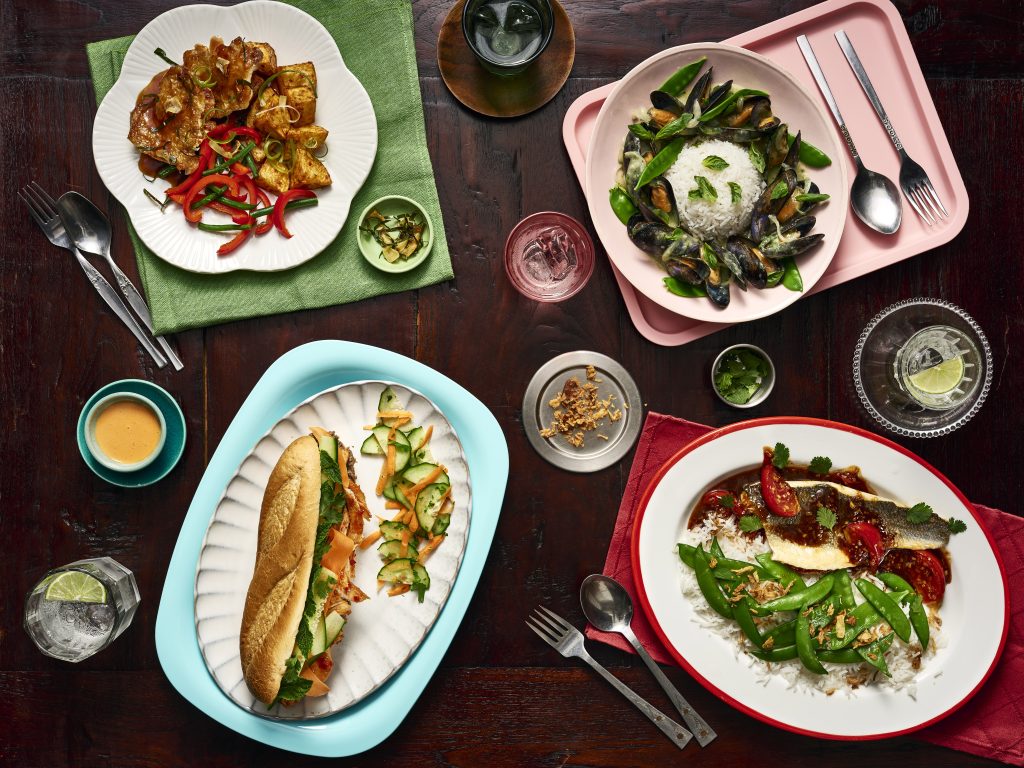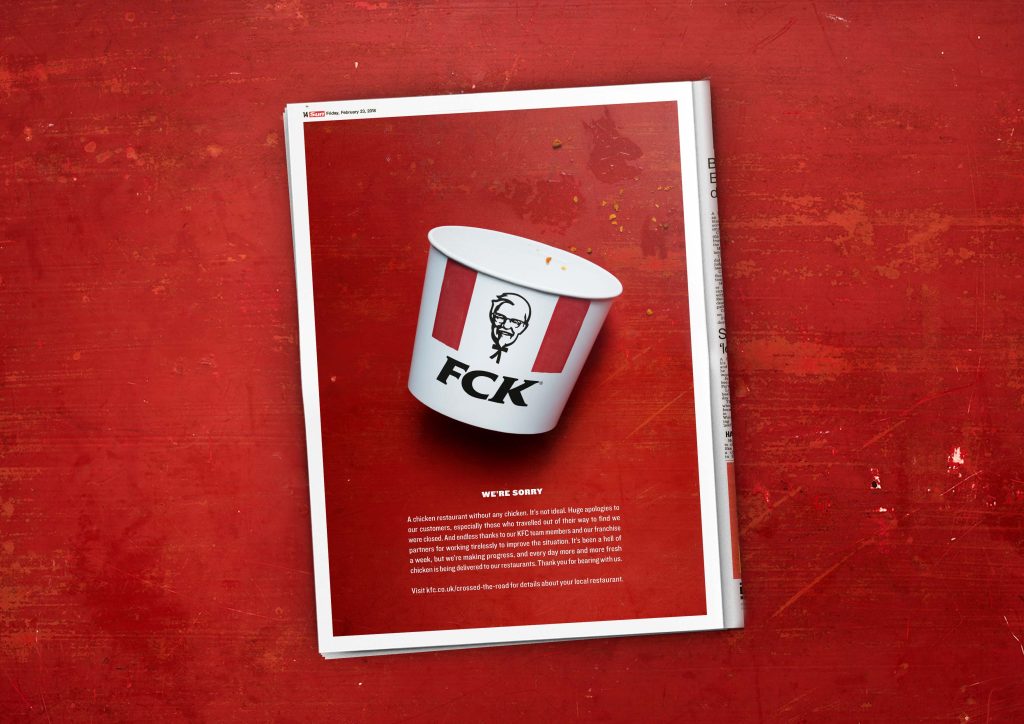Katie Rosen explains how emotion-led storytelling makes everyday products unforgettable
Everyone knows the KFC story: the chicken shop runs out of chicken, a crisis erupts, and then comes the infamous ‘FCK’ ad. Cheeky, humble, unforgettable and endlessly discussed as a PR stunt. But the real lesson wasn’t just smart crisis comms; it was emotion-driven marketing at its best.
By leaning into humour and humanity, KFC turned disaster into connection. That’s the bigger point. Emotion doesn’t just save brands in bad times, it builds the kind of resonance that makes campaigns iconic and products feel irreplaceable.
For years, food marketing relied on functional promises. Freshness, value, and convenience are fundamental, but they no longer set brands apart. Consumers don’t just buy what you sell – they buy how you make them feel. And right now, they want more: more guts, more relevance, more reasons to care.
That’s why emotional storytelling isn’t a nice-to-have. It’s the only way food brands can elevate the everyday and stand out from competitors.
Beyond functional benefits
Recipe boxes show how far things have shifted. Early campaigns simply explained the model, educating consumers on how they worked. Now that most people get it, the battle has shifted from function to feeling. The challenge is emotional: convincing people these boxes deserve a place in their weekly routine.
In our latest campaign, we show the chaos of midweek mealtimes without Gousto – then the calm that comes with it. After a long day, deciding what to eat is overwhelming. Capture that pressure, release it, and convenience becomes emotional relief.

This shift from function to feeling reflects a broader industry change. People want to feel why your product matters. Dinner is more than fuel; it’s identity, connection, and a joyful pause from daily chaos.
Selling a feeling, not just a product
The most powerful food campaigns go straight for the heart. Waitrose leans into trusted quality while surprising customers with wit, like its ‘Dish’ podcast extending its ‘Food to Feel Good About’ promise. By experimenting with formats and tone, it stays relevant and memorable.
Different brands strike different emotional chords. KFC owns cultural relevance. Its surreal “Believe” campaign elevated fried chicken into a ritual. And during its 2018 chicken shortage, it didn’t issue jargon, it laughed with its customers (below). A risky move, but the reward was brand love, not backlash.

Even water has been reimagined as a lifestyle choice. Liquid Death transformed hydration into rebellion, irreverence, and a cult-like following. If they can make water cool, what excuse do food giants have for bland, functional campaigns? The lesson is simple. Anyone can sell a product, but only the bold sell a feeling, and feelings stick.
The missing ingredient: bravery
Despite standout examples, too much food branding still plays it safe. Recipe boxes fall back on polished plates that feel miles from reality. Supermarkets lean on price wars and family clichés.
What’s missing? Creative bravery. The brands that resonate embrace real life – messy kitchens, chaotic families, and unexpected humour in the everyday. They tap into culture, heritage, and personality. They play with tone, whether it’s the wry humour of a challenger or the grandeur of a heritage brand reclaiming its voice.
Food is culture. When brands connect with cultural moments – a sports final, a music festival, even the rhythm of seasonal eating – they matter more in people’s lives. Branding itself can be entertainment. Campaigns should feel like events people want to talk about.
Earning a place in people’s lives
For DTC brands, the hardest part isn’t getting noticed, it’s earning a place in someone’s life. That challenge is even greater if you’re a subscription brand, because you’re asking for more trust up front and a bigger commitment from the start. People expect speed, value, and convenience, but they also want to feel confident about letting you into their homes and routines.
That’s where creativity is on the front line, alongside the product. A great product is non-negotiable, but creativity brings it to life before someone has tried it. It makes the leap to subscription feel worth it, turning a transaction into a relationship, a delivery into a ritual, and a product into a story worth telling. That’s how you shift from fleeting choice to trusted everyday presence.
Weaving a consistent narrative
To earn loyalty, you need a story that shows up everywhere. Every stage of the customer journey is an opportunity to connect, not just sell. Owned touchpoints like your website, recipe or menu cards, and app notifications, are all spaces where you can reinforce your brand’s personality. Packaging isn’t just delivery, it’s a ritual of anticipation, and a moment where the brand can surprise you with the unexpected. Every interaction adds to the narrative, making the brand feel personal as well as practical.
This consistent emotional storytelling is how you transform a product into an experience. PR activations, partnerships and user-generated content extend the story beyond paid media and into culture. Experiential touchpoints – think events, collaborations, pop-ups – bring it into the physical world in tangible, memorable, and shareable ways. Each of these interactions, however small, becomes part of the same narrative, helping consumers build a relationship that feels as personal as it does practical.
The challenge for FMCG leaders
Food brands are uniquely placed to win here. Meals happen daily, and with them, stress, joy, relief, and togetherness. Brands that acknowledge and elevate those emotions transform consumption into culture. The prize is market share, yes. But more importantly, it’s mindshare; when people see your brand as a way to feel better about their day.
It’s not just about selling food – it’s about selling a feeling people want to belong to. Functional benefits are just table stakes. If you want lasting loyalty, you need to go further. Look, sound, and feel different by breaking category codes. Think multi-sensory, combining visuals, sounds, and words to make people feel something.
Don’t just show people what’s for dinner. Show why it matters, and how your brand can shape that moment. The brands that connect emotionally today will own the market tomorrow.
Katie Rosen is Head of Creative at Gousto






